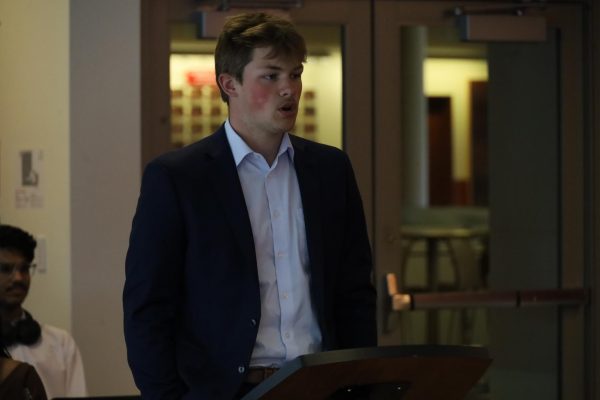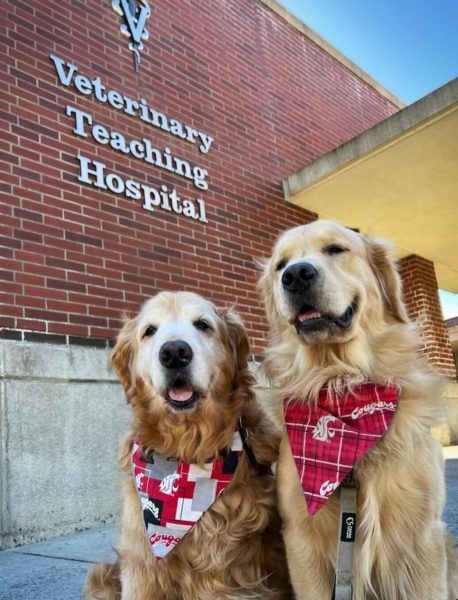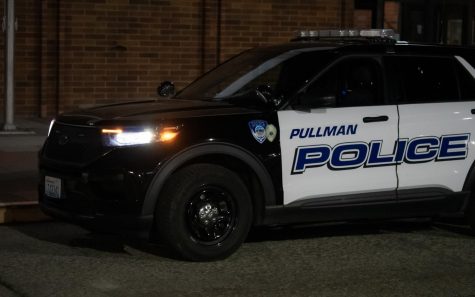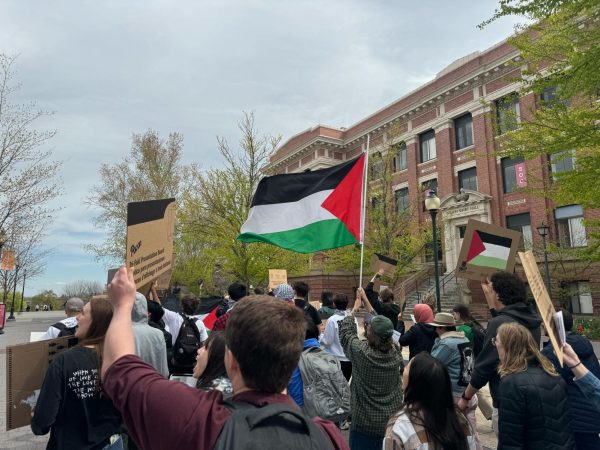Green Dot program trains students in violence prevention
Janille Lowe, a student assistant with the Violence Prevention Center, explains the goals and importance of the Green Dot program.
April 22, 2016
A student overhears two of his peers talking about resources for sexual assault survivors. He notices one tending toward victim blaming and recognizes he needs to speak up.
Nikki Finnestead, Green Dot coordinator at Health & Wellness Services, said violence prevention can be as simple as derailing this kind of problematic conversation with a simple statement.
“That’s actually a Green Dot,” Finnestead said. “That is a bystander stepping in and saying something. It doesn’t have to be a drastic, life-altering moment.”
More than 5,000 students each year, including freshman and transfer students, have participated in Green Dot sessions on violence prevention since their inception at WSU in 2014.
The basic message of Green Dot is that any community can reduce violence. Finnestead said the organization’s primary goal is to increase student involvement in prevention efforts and dialogue.
“It’s really building a foundation for future action,” Finnestead said. “It’s raising awareness, it’s helping to break down the silence we have around sexual assault.”
On a college campus, students are often the first to witness violence and therefore are in the best position to prevent or interrupt such situations.
However, Finnestead said many find it difficult to intervene due to mental barriers. These include the notion that it is not their place to get involved, or the hope that someone else will take charge. Once these obstacles are eliminated, Green Dot switches its focus to practical prevention methods.
Techniques for diffusing dangerous situations can be summarized by the three D’s, the first of which is directness. Certain situations can be addressed by confronting them forthright, Finnestead said.
Other circumstances require delegating responsibility to someone who can handle the issue more effectively, such as police or an adviser. Finnestead said a third approach is to cause a distraction, such as yelling “Cops!” or “Free food!”
Green Dot serves a purpose in addition to prevention education, Finnestead said, as it helps students to have ongoing conversations throughout their college careers and beyond.
“If you know someone is making our campus unsafe for other people, say something, challenge that behavior,” Finnestead said. “If people know that it’s happening but nobody is saying anything, it’s almost giving this tacit approval for the behavior to continue.”
Emilie McLarnan, Green Dot-certified associate director of Alternatives to Violence of the Palouse, said the success of the program signals a shift in thinking regarding being proactive about sexual assault.
“Fifteen years ago prevention was ‘Here’s how to carry your keys in your fist like a weapon, and cover your drink, and don’t go out alone at night,’” McLarnan said. “We’re going forward with the rest of the movement to look at those root causes.”
She said too often victim protection becomes the narrow focus of prevention efforts, when it would be more effective to address the people committing acts of violence.
Green Dot certification requires intensive training sessions over several days, but there are alternatives for becoming involved in violence prevention efforts. McLarnan said among these are simply knowing how to handle situations as a bystander and being a model of healthy relationships.
In addition to the mandatory short presentations, Green Dot offers longer ones which provide more time to talk about challenging topics and put violence prevention skills to practice in actual scenarios.
Janille Lowe, a student assistant at the Violence Prevention Center, said the Green Dot program makes the issue of sexual assault more personal for students and forces them to resist distancing themselves from it.
“It’s putting the power back into our community, into our society, and saying that it’s our job to be each other’s keepers,” Lowe said. “We can’t be detached from each other because … if I’m being hurt, you’re being hurt as well. If I’m not safe, you’re not safe.”
As an individualistic culture, Lowe said work must be done to deconstruct the idea that sexual assault is only a problem for “those people.”
Finnestead said the program, only a few years old, has already begun to pick up momentum. Evaluations are overwhelmingly positive, she said, and students often report recalling and utilizing their training in critical situations.
“Even if they couldn’t remember the name, they remembered the concepts,” Finnestead said. “They remembered the ultimate goal: I should do something.”




















